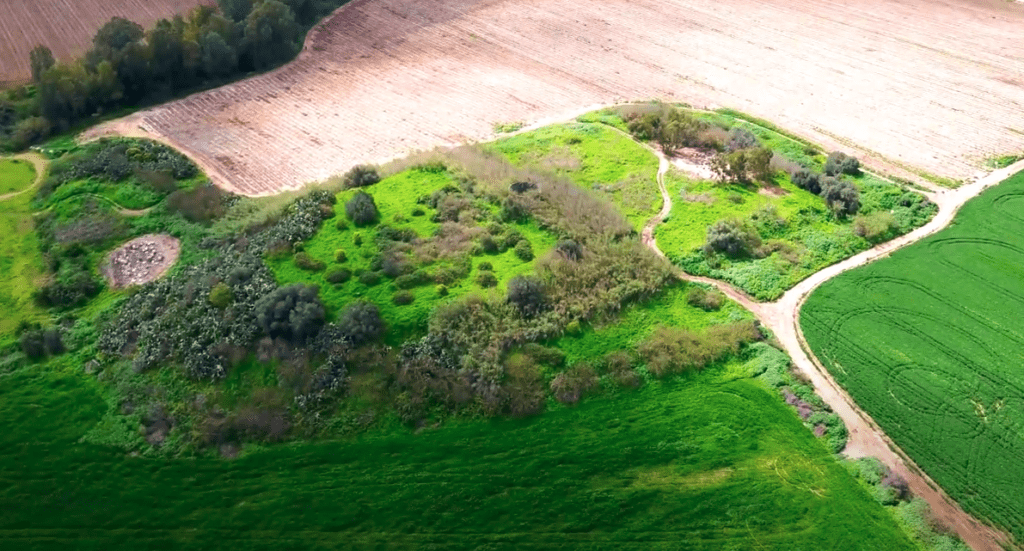Location
Tell Qana (Tell el-Mukhmar) is situated in the Nahal Ha-Yarqon basin, near the confluence of Nahal Qana and Nahal Yarqon. Located 3 km east of Ramat Ha-Sharon, 5 km south of Ra‘anana, and 4.5 km northwest of Tel Afeq, the mound rises approximately 12 meters above the surrounding plain, covering an area of 25 dunams.


History
The site includes layers from various historical periods, with surface finds collected during a survey in the late 1970s. These finds encompass artifacts from the Early, Middle, and Late Bronze Ages, Iron Age I–II, and the Persian, Roman, and Byzantine periods.
History of Excavations
Excavations at Tell Qana were carried out in 2007. Prior to these excavations, the site was mechanically trenched, revealing eleven potential archaeological features. The excavation focused on the eastern fringes of the tell, uncovering evidence of occupation from the Middle Bronze Age II and Late Bronze Age II, as well as possible Iron Age II winepresses.
Important Findings
The key discovery at Tell Qana is a large Late Bronze Age II cist grave, unique in its size, plastering, and east-west orientation. The grave contained a primary burial of a young adult, along with ceramic and metal funerary gifts. The ceramic vessels are of local production and date to late in the Late Bronze Age II. The grave’s unique features, including high-quality lime plaster, indicate the possible status of the deceased and suggest influences from different cultures, including Egyptian. However, no Egyptian artifacts were found in this burial.

